“Carrer Princesa”, El Born, Barcelona, Spain
High-density urban design and housing
Net density 150 dwellings per hectare (plus retail)
Site density 271 dwellings per hectare (plus retail)
Height Four storeys
Built 1850s
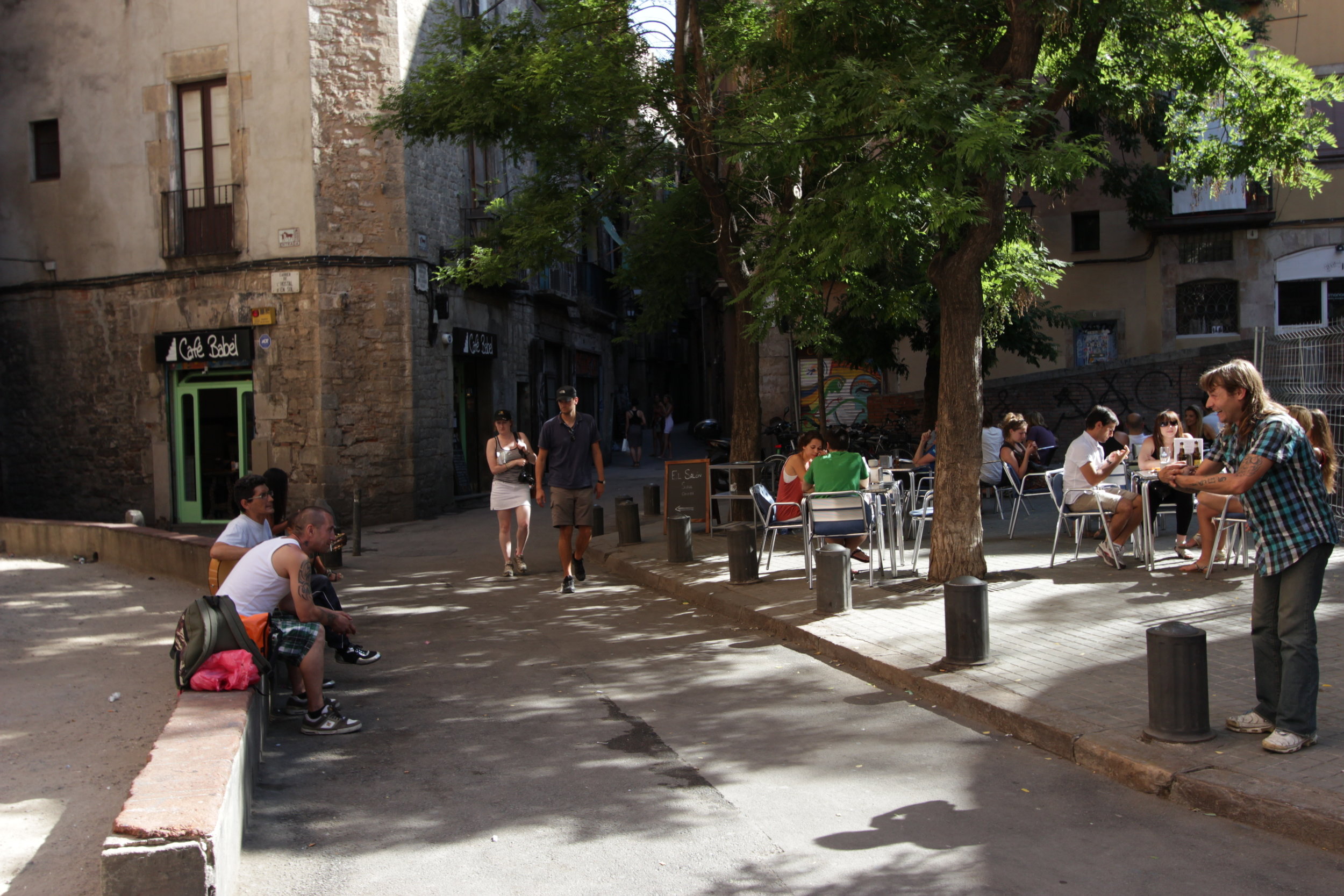
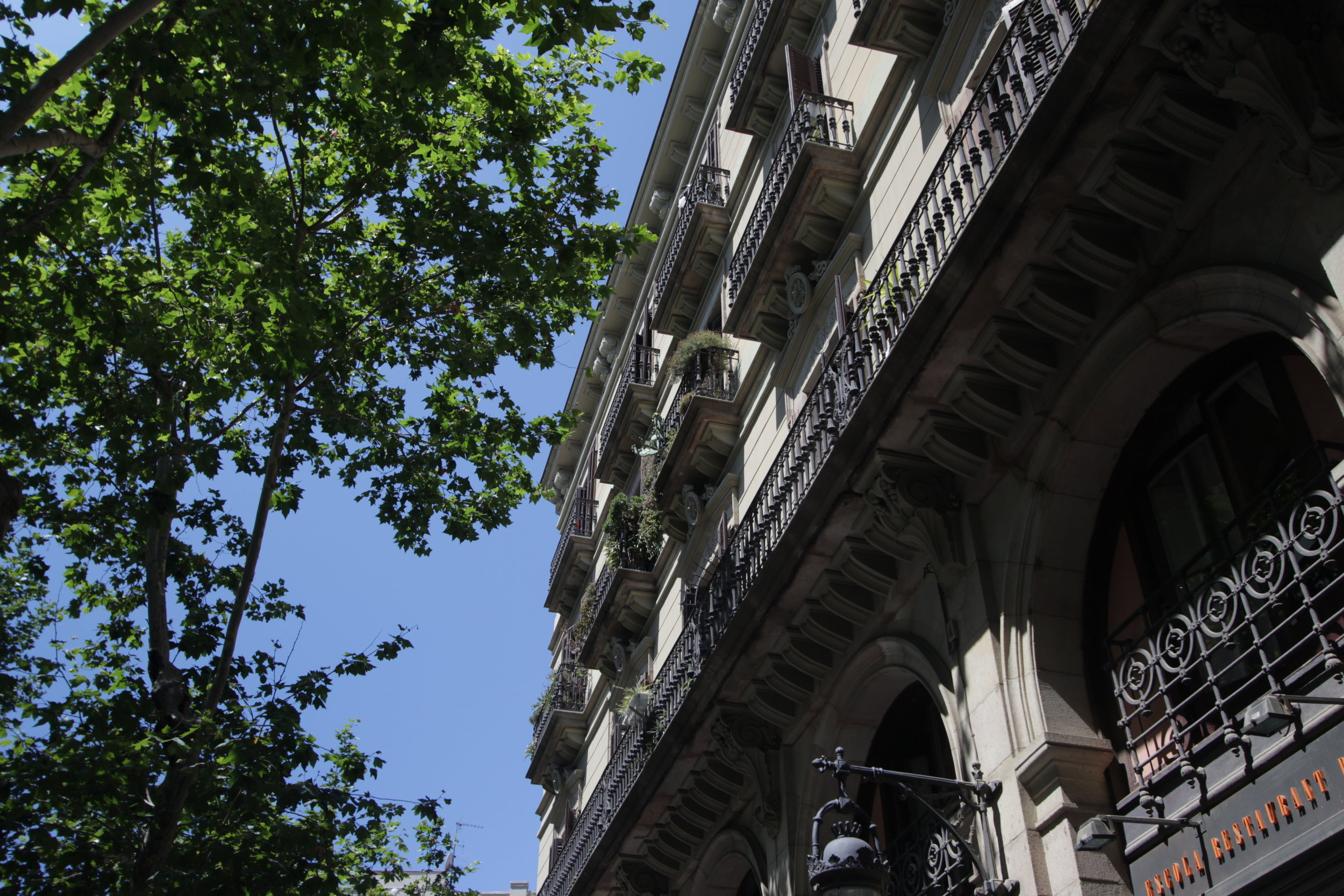
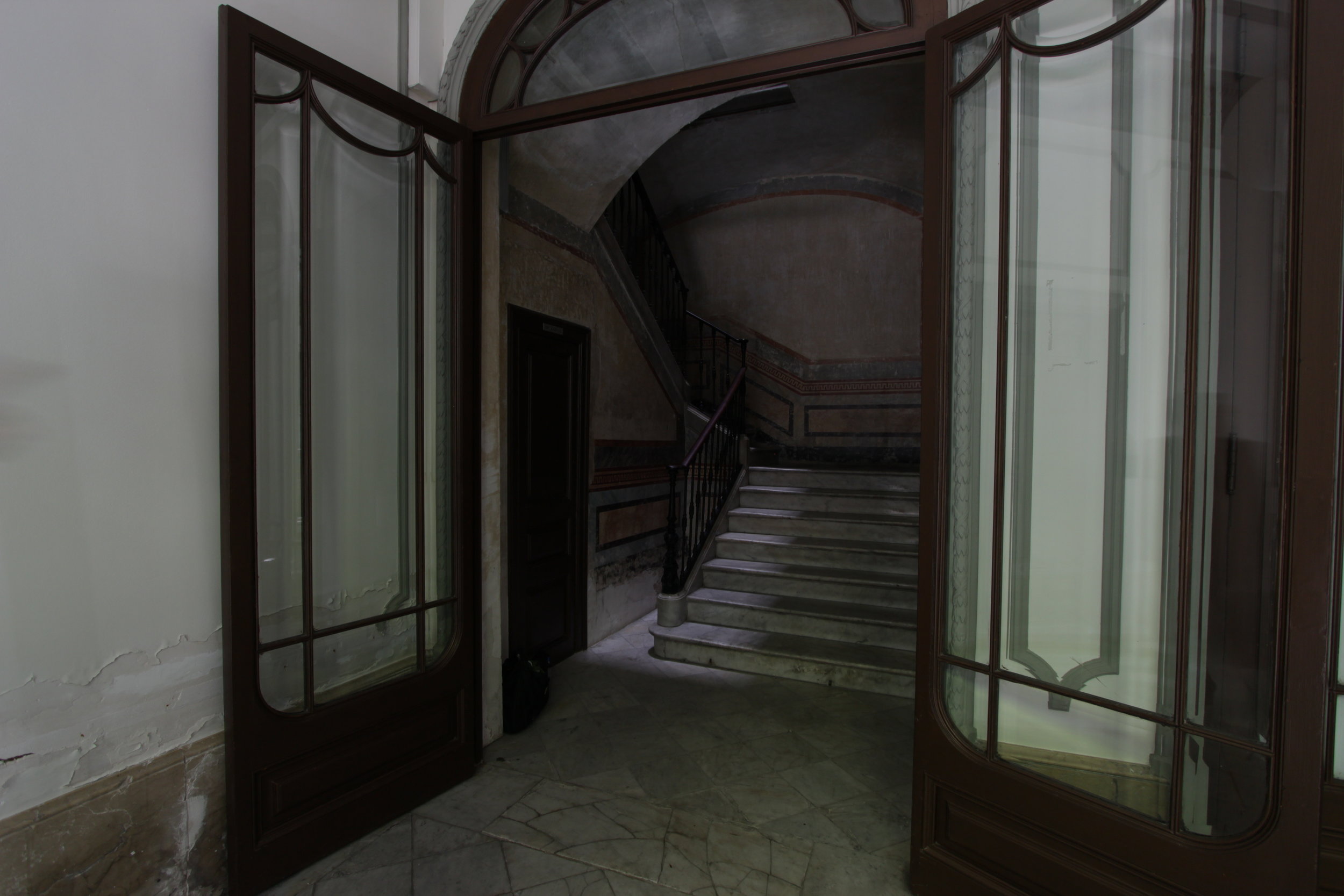
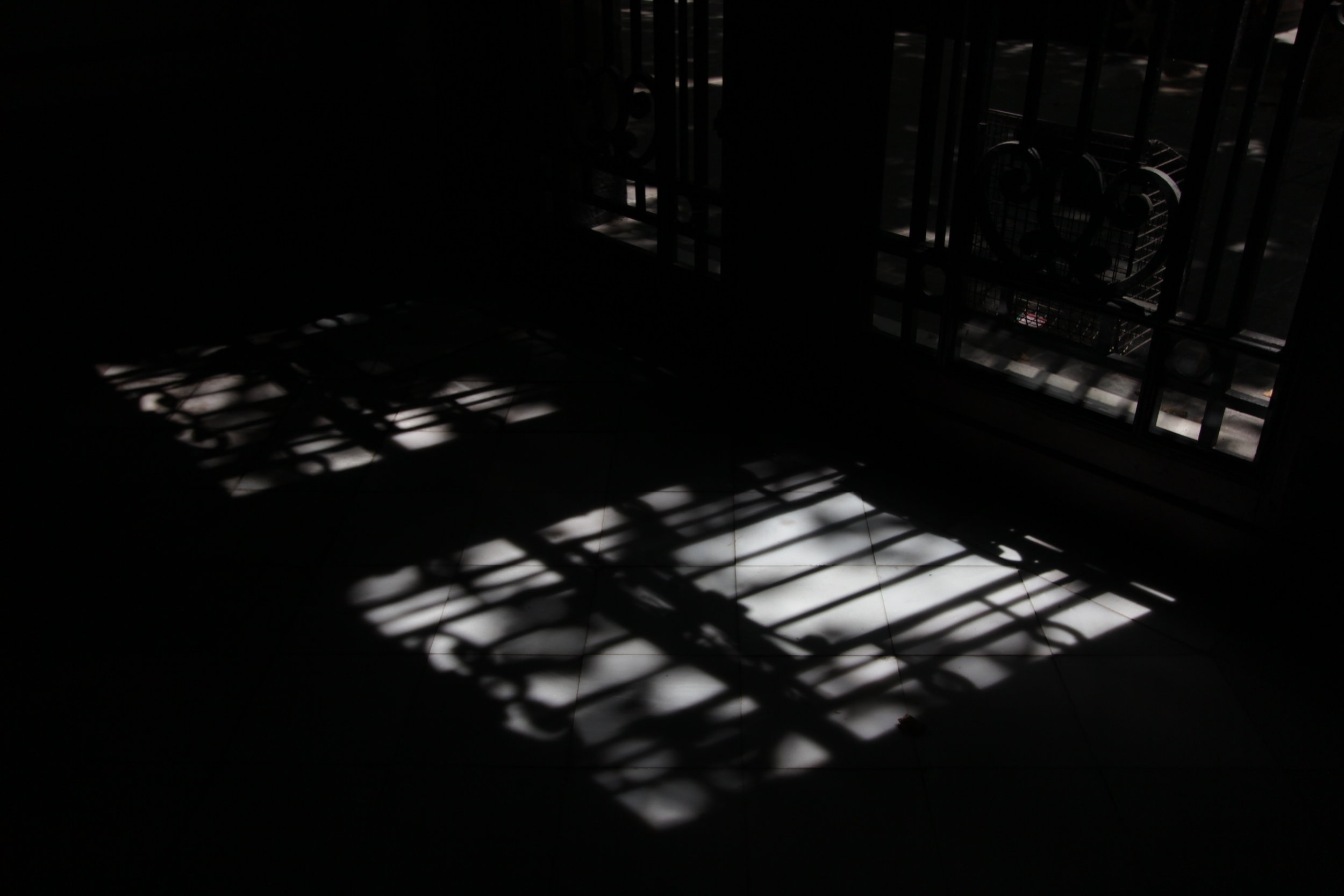
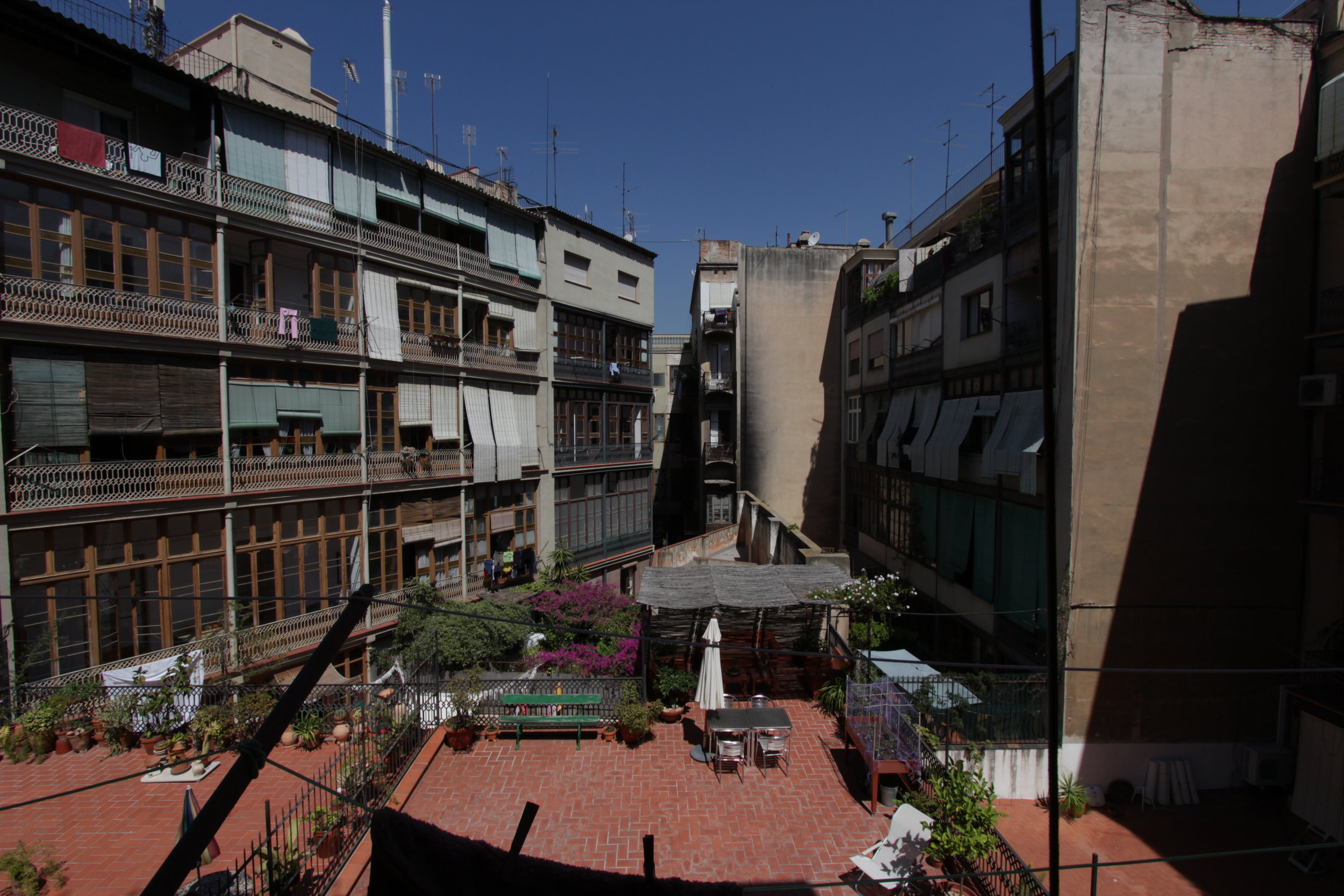
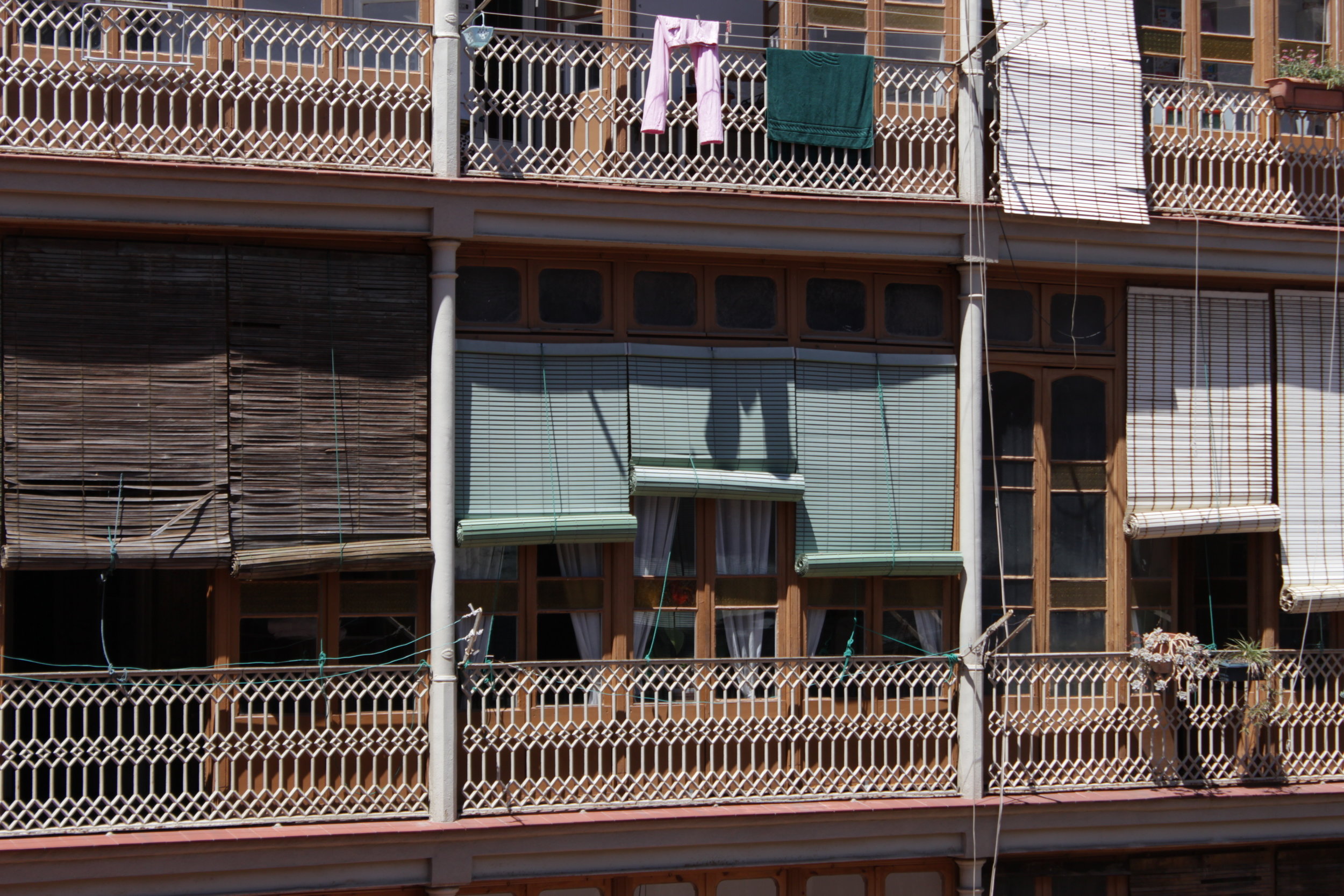
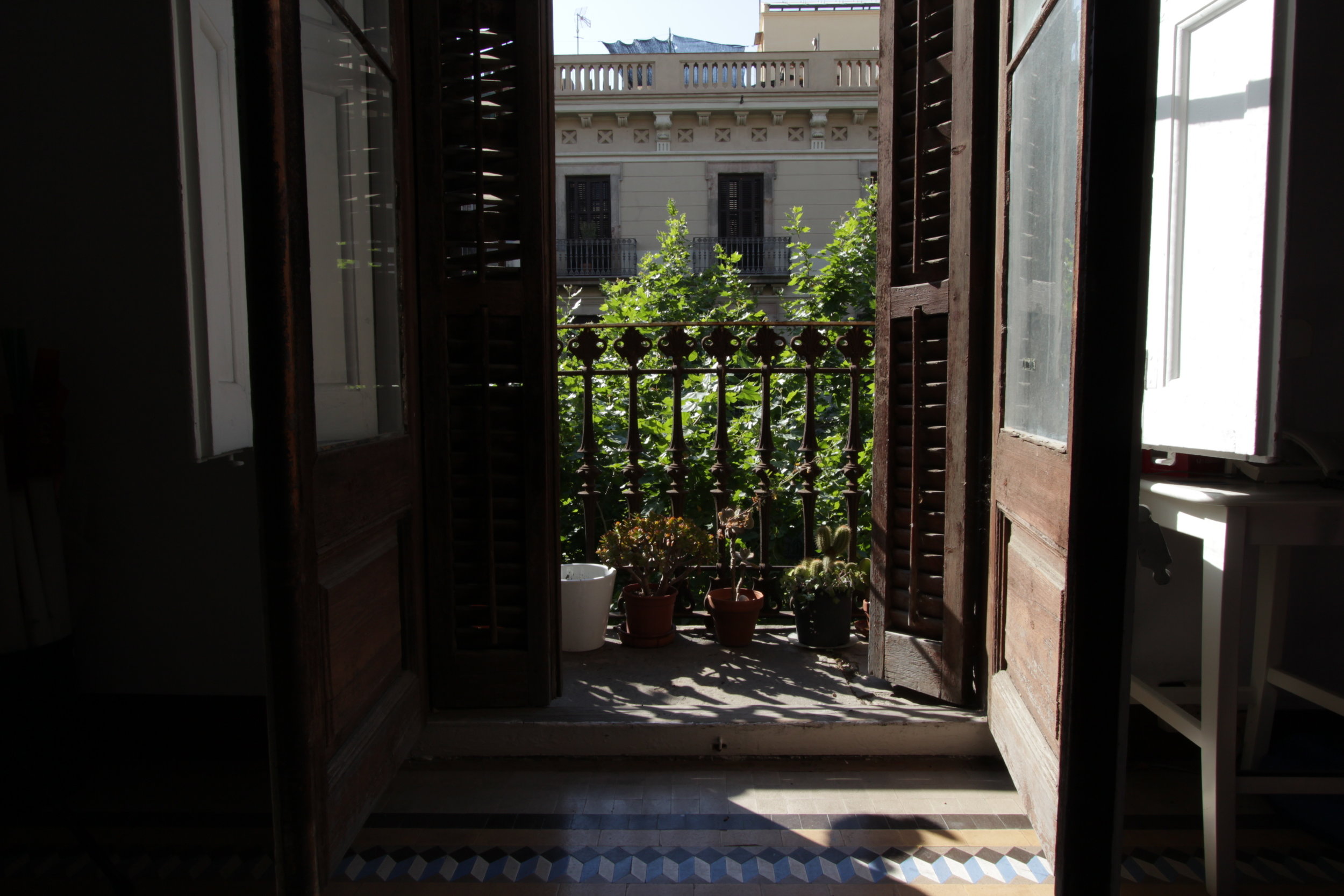
Carrer Princesa
History frames daily life. Street as public living room. Hot sun strikes the beautiful stone façade rising above the London Plane trees. Precise cast ironwork and drop glass street-lighting adorn the arcade storey. Upper storeys are modelled with massive brackets and cornices to form a solid articulated continuous street façade. This stately metropolitan street could be in Paris or Buenos Aires.
Why Carrer Princesa was chosen
The generous amenity of this apartment block on Carrer Princesa is worth examining. While it has the lowest net density of any of the projects studied (refer Density Comparison Table), it has the highest density in terms of habitable rooms per hectare. Its density figure is also lower because the lower floors are commercial and not residential.
Urban design
The Carrer Princesa is part of a small quarter built at the time of the demolition of the Citadel and the building of the Parc de Ciutadella and the Market. It occupies a triangular block left over from the void between the old El Born and the new rectangular Park.
The dark passages of the Gothic and the miniature city of Barceloneta nearby are another world. The width of the Carrer Princesa is greater than the height of its buildings. It is a splendidly metropolitan and urbane place and was an area for the wealthy middle classes when built.
Planning
The apartment planning is similar to the Eixample plan shown in The Urban Housing Handbook1. The splendid naturally lit and ventilated stair serves two apartments off each landing. A mix of apartment types and sizes is not possible with a plan this deep without compromising cross ventilation. These large (175m2) 4-5 bedroom flats can however be occupied by families or by multiple occupants. Each apartment has one bathroom only.
Environmental
These big apartments are also very deep; 20 metres from north to south external walls. All rooms are naturally lit and ventilated by two large light wells that also cause acoustic problems. Under Australian Building Codes these light wells would be required to have fire protection measures. On a hot summers day in Barcelona the rooms lit by light wells are cool and quiet ( perfect for a siesta)
Materials and detailing
The rich and beautifully resolved ornament of the façade is reminiscent of the more splendid streets of Hausmann’s Paris.
Landscape and open space
Street trees have room to grow high, broad and healthy. The vast Parc de Ciutadella is nearby. Street balconies give privacy and permit incidental views up and down the street. The big private balconies facing the courtyard can be enclosed by the glass doors and permit indoor/ outdoor living.
Shared facilities and services
There are no communal facilities within the building. The El Born area though is rich with are shops, museums, markets, the park and other facilities.
Comments and conclusions
The apartments along Carrer Princesa contribute to the street and are a refuge from it. Lightwells are employed to provide good light and ventilation within a deep and inherently dark block. The beautiful and continuous facade is another example of quality architecture “anchoring” a neighbourhood.
Because of its generous proportions and amenity this apartment type is applicable over large areas of the city; it is a sustainable density.
Density Comparison Table
acknowledgements and thanks
Michael Zanardo; project mentor and source of knowledge.
Justin Brickle; video editor of Zeitgeist Films – jbrickle@netspace.net.au
In Barcelona
Nacho GomezDani Soler and Georgina Pujol
Footnotes and Bibliography
1 – Firley, Eric & Stahl, Caroline. The Urban Housing Handbook, John Wiley & Sons Ltd (England), 2009
Timelapse Music
Gidon Kremer (1996) Oblivion, Piazzolla ‘Hommage À Piazzolla’
